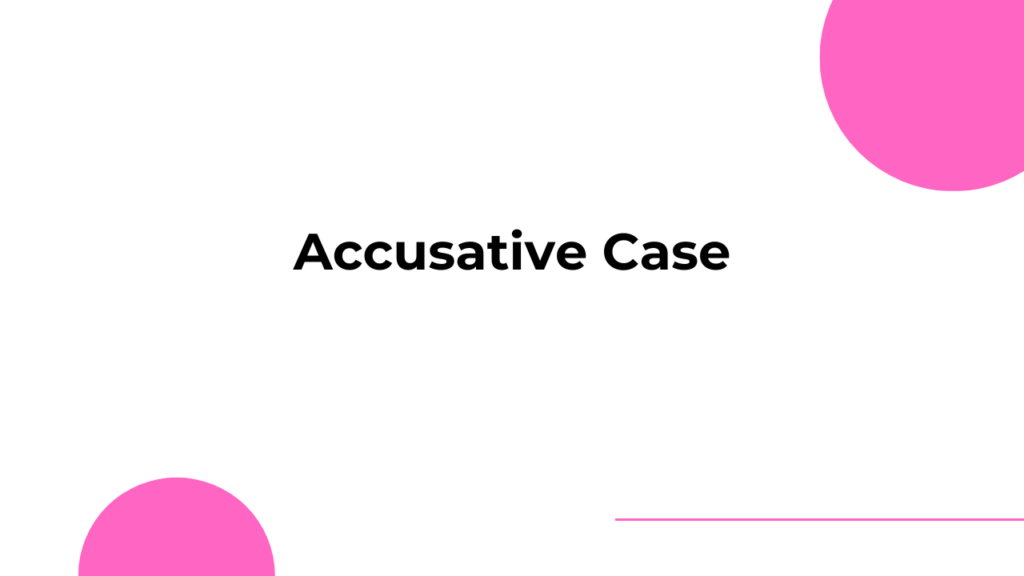
The accusative case is one of the four grammatical cases in the German language. It is primarily used to indicate the direct object of a verb, which is the person or thing that directly receives the action of the verb. In German, the direct object can be a noun, pronoun, or an adjective.
The accusative case is essential to understand because the form of the noun or pronoun changes depending on the case. In German, there are three genders (masculine, feminine, and neuter) and a plural form. The definite articles (der, die, das, and die for plural) and indefinite articles (ein, eine, and ein) also change in the accusative case as follows:
Visit our YouTube channel for more German learning tutorials!
Masculine:
- Nominative (subject): der / ein
- Accusative (direct object): den / einen
Feminine:
- Nominative (subject): die / eine
- Accusative (direct object): die / eine
Neuter:
- Nominative (subject): das / ein
- Accusative (direct object): das / ein
Plural:
- Nominative (subject): die
- Accusative (direct object): die
Certain prepositions in German always require the accusative case. These prepositions are:
- durch (through)
- für (for)
- gegen (against)
- ohne (without)
- um (around, at)
When using these prepositions in a sentence, you must ensure that the article, noun or pronoun following the preposition is in the accusative form. By understanding the accusative case and its prepositions, you can form accurate and grammatically correct sentences in German.
in German some other prepositions can require either accusative or dative, depending on the context of the sentence. These prepositions are called “two-way” or “dual” prepositions. They are:
- an (at, on)
- auf (on, upon)
- hinter (behind)
- in (in, into)
- neben (next to, beside)
- über (over, above)
- unter (under, below)
- vor (before, in front of)
- zwischen (between)
These two-way prepositions require the accusative case when they indicate a direction or movement from one place to another (a change of location). They require the dative case when they indicate a fixed position or location (no change of location).
For example:
- Accusative: Er legt das Buch auf den Tisch. (He puts the book on the table.) – movement/change of location
- Dative: Das Buch liegt auf dem Tisch. (The book is on the table.) – fixed position/location
Quiz:
For more examples, download our app on your or and enjoy a comprehensive learning experience!
